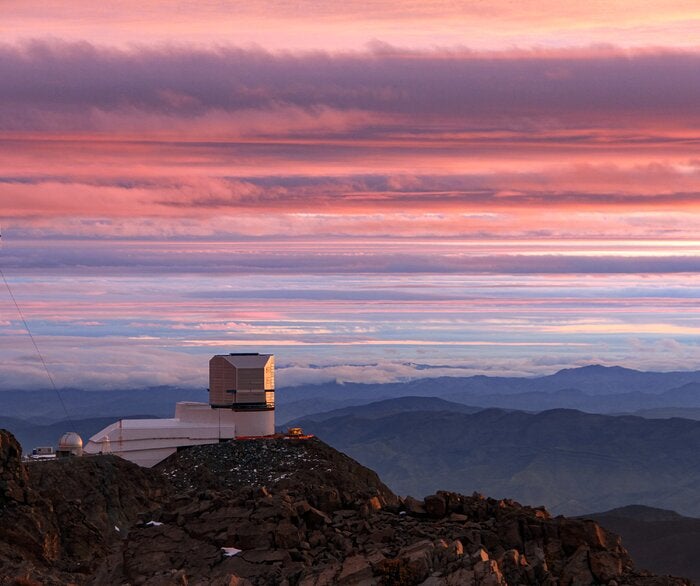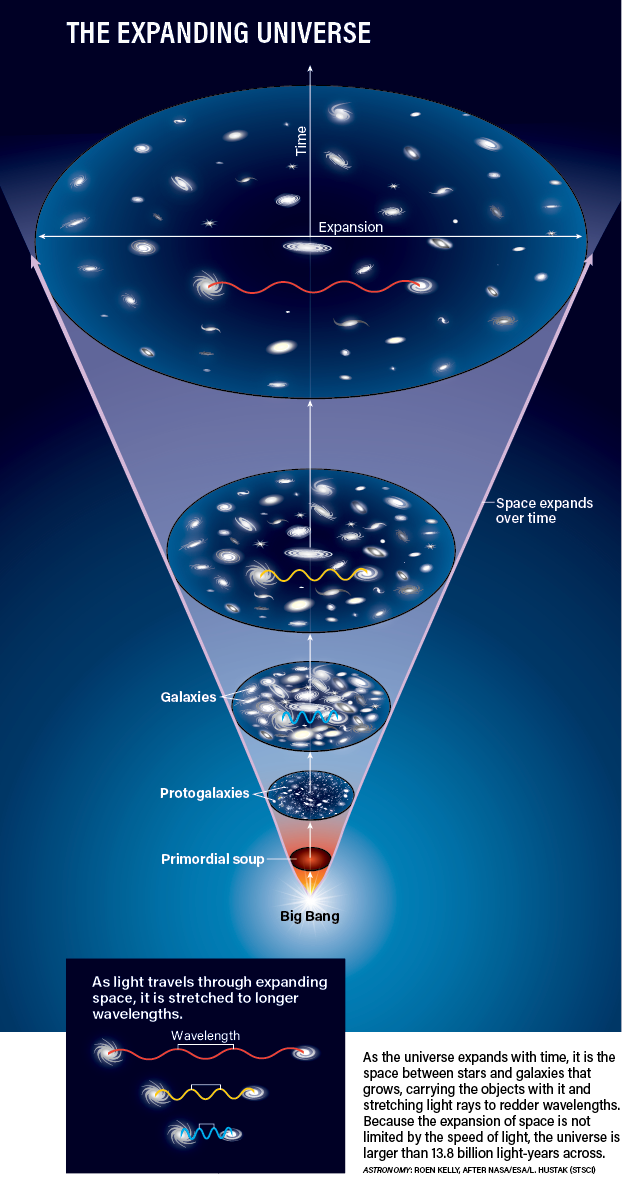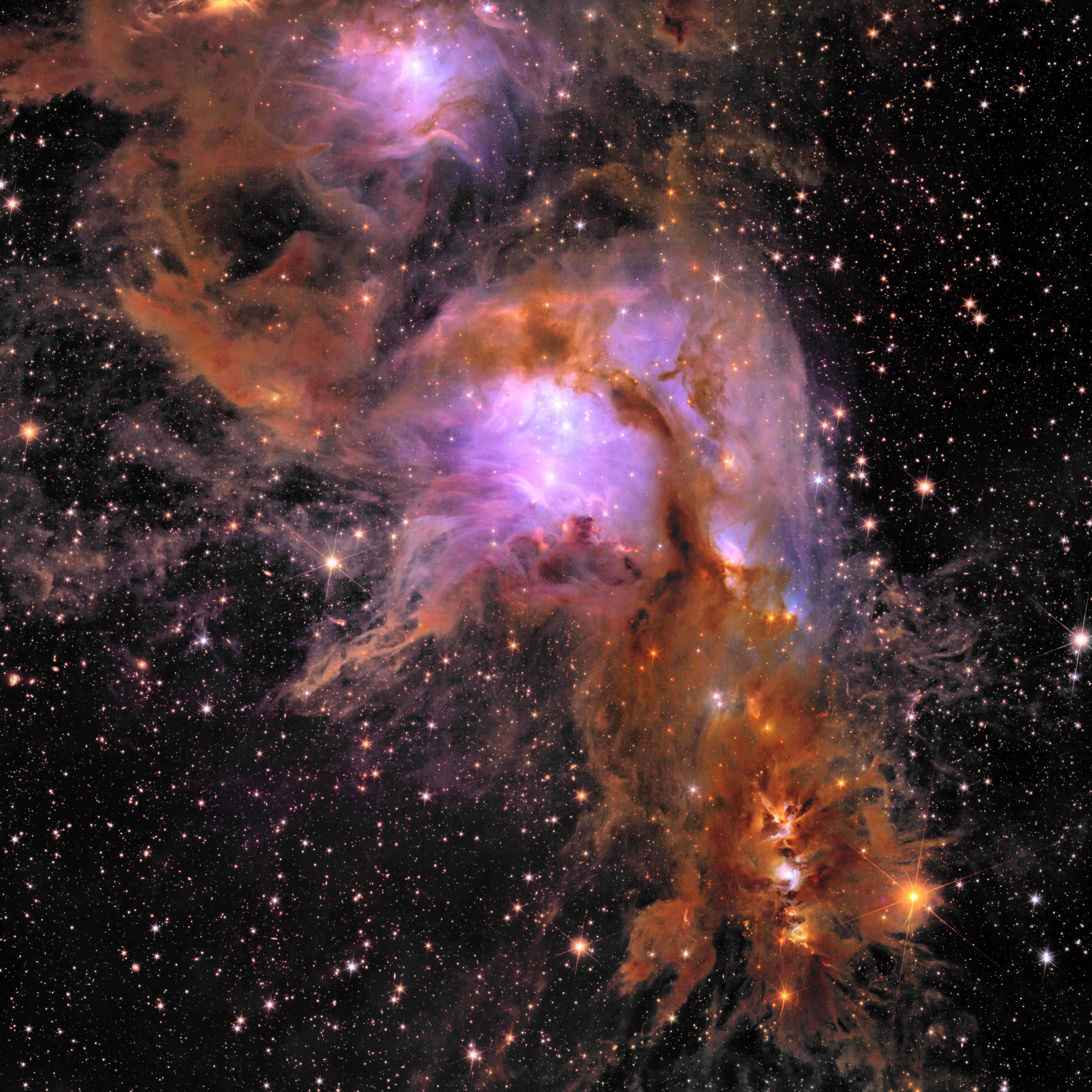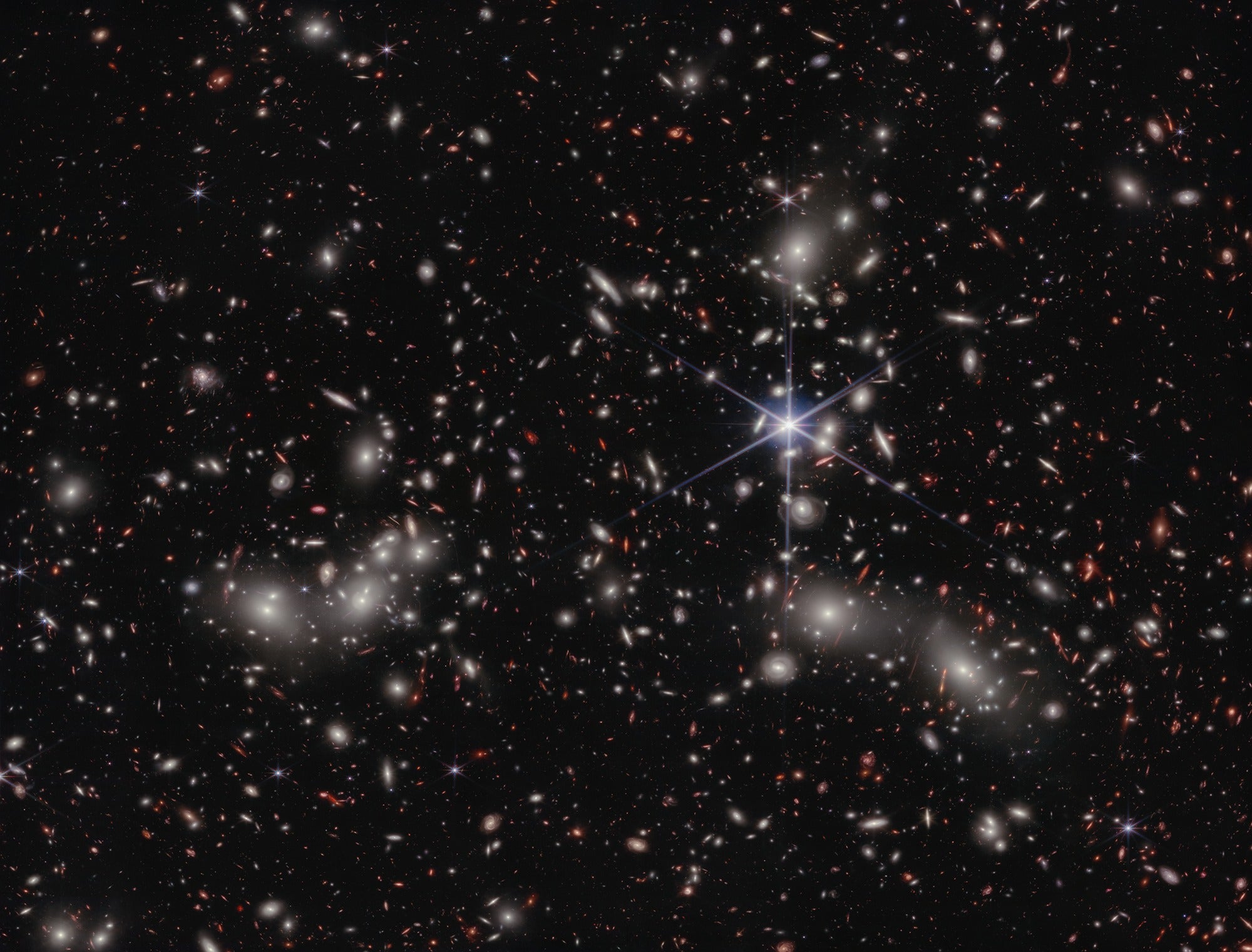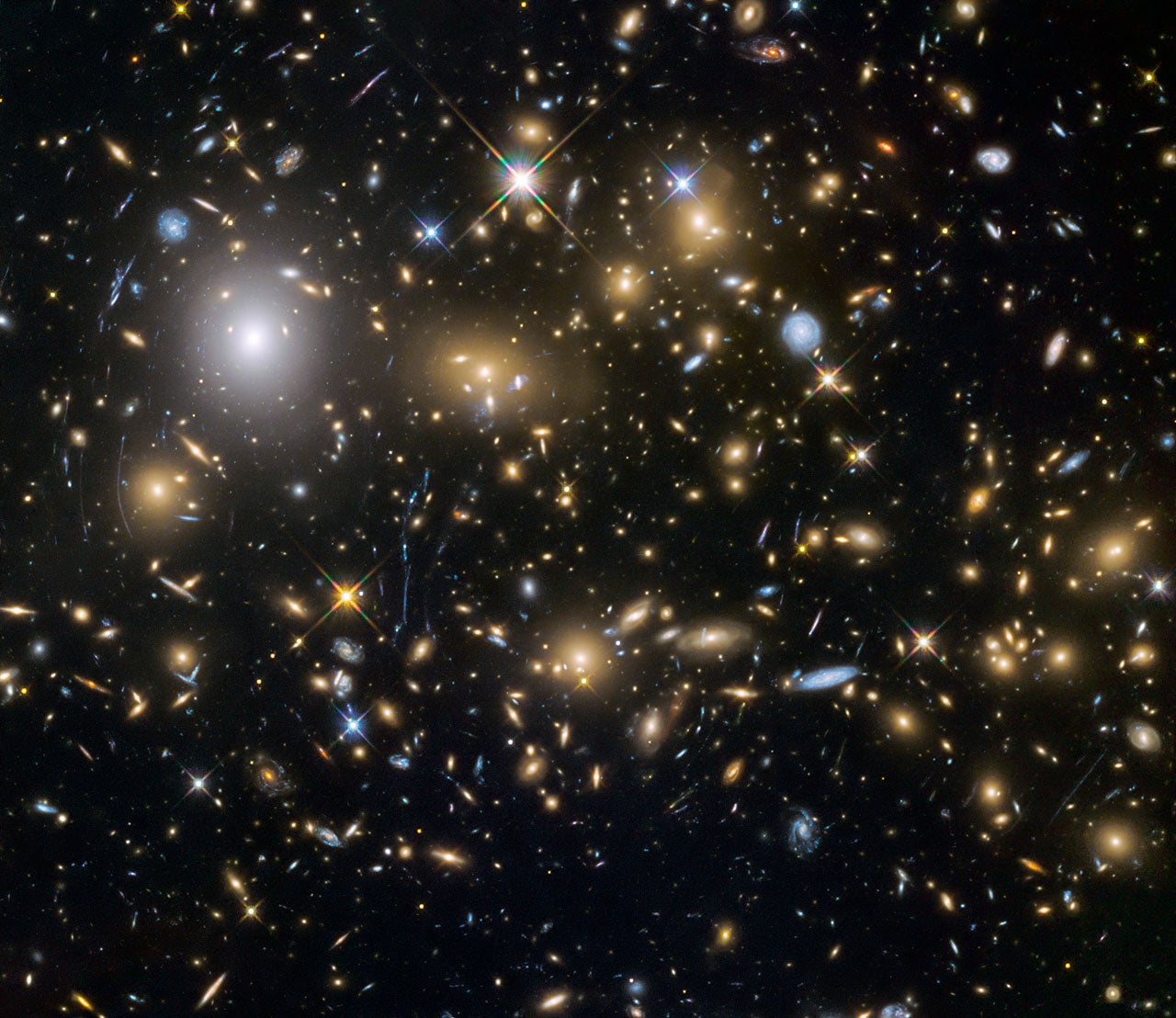
In July, cosmologist Rajendra Gupta at the University of Ottawa published a splashy paper in Monthly Notices of the Royal Astronomical Society claiming that our universe is more than 10 billion years older than we have long believed it is. Let’s dig into this surprising claim that, if true, would shake the foundations of modern cosmology, and see if it holds up to scrutiny.
Spoiler alert: it doesn’t.
The setup
The central focus of Gupta’s work is the amazing results coming out of the James Webb Space Telescope (JWST), which has revealed that the early universe is filled to the brim with large galaxies. These galaxies are far larger than we thought they would be based on our current model of the evolution of the universe, known as ΛCDM (where Λ is the uppercase Greek letter lambda; pronounced “Lambda-CDM”). The ΛCDM model is about as simple a model as can be that attempts to fit all available evidence. It says that our universe is largely made of dark energy (that’s the “Λ” part), a good chunk of cold dark matter (that’s the “CDM”), and a smattering of normal matter and radiation (which doesn’t get to be a part of the name). The model also states that the universe has been expanding from a hot Big Bang, and that expansion causes the light from distant galaxies to redshift on its way toward us.
Like all ideas in science, it has its shortcomings and holds its fair share of mysteries. We do not understand the nature of dark matter or of dark energy, and in the latest case, the ΛCDM model predicts that early galaxies should be small.
New cosmology?
One very real possibility is that we’re getting this all wrong and that the ΛCDM model is broken. This is the tack that Gupta took, and he introduced a hybrid model that invokes several ideas that have been floating around in cosmological circles for almost a century to explain the young, large galaxies. In Gupta’s model, the universe is more than 10 billion years older than the ΛCDM model would suggest, which gives galaxies plenty of time to grow to their impressive sizes. In other words, the “early” universe isn’t so early. Problem solved.
But cosmology is a mature science and many, many observations exist that all relate to each other. You can’t just explain one observation, like the sizes of distant galaxies, and call it a day. You have to face a gauntlet of other observations if you want your model to succeed. Gupta acknowledges this and also asserts that his model agrees with, for example, the isotropy of the cosmic microwave background (CMB; i.e., why it is so uniform throughout the sky) and the data from supernova surveys.
But to make all of these observations work, Gupta’s model is far more complex than ΛCDM. In Gupta’s model, there is the normal expansion of the universe. Additionally, he invokes an idea called “tired light,” first proposed by astronomers at the dawn of modern cosmology, around 1930. This idea challenges the interpretation that the universe is expanding, instead stating that light simply loses energy as it travels. Plus, Gupta invokes another century-old idea that the physical constants of the universe, like the speed of light and the strength of gravity, change with time.
Unsurprisingly, when you make models more complex and more involved, you can generally explain any observation you want. But this comes at a price.
Hitting snags
Gupta’s model introduces an enormous amount of additional complexity and new physics to the universe, all to explain the large size of distant galaxies while also satisfying the aforementioned nature of the CMB and the supernovae we see. However, many more observations exist that have yet to be addressed by this new model. For example, we have the abundance of light elements forged in the early Big Bang. We have the growth and development of clusters, filaments, and voids in the cosmic web. We have not just the isotropy of the CMB, but the tiny fluctuations in temperature that do exist within that background. And more.
The ΛCDM model can explain all these observations, while Gupta’s model does not. In addition, Gupta’s model introduces all sorts of new physics that currently go unexplained. How exactly does light lose energy as it travels? What is the mechanism behind the variations in the physical constants? These processes demand explanation. Indeed, physicists have examined similar models for decades and found them unable to cope with the wealth of data coming out of particle physics experiments around the globe.
Even if we were to take Gupta’s model seriously and put aside the issues with its foundational physics, the model is not as hardy as it appears. Yes, it explains the size of distant galaxies, but not their age. The JWST observations do reveal galaxies that are larger than we expected them to be, but paradoxically they also appear young and bright. Despite their size, they look like galaxies that are only a few hundred million years old, not 5 billion or 10 billion years old, like modern galaxies. Also, if Gupta’s model is accurate, we should see stars all over the place that are 15 billion to 20 billion years old. We do not.
Gupta’s model is interesting as a thought experiment to explore what physics we might need to explain these and perhaps future JWST observations. But as a fully functioning cosmological model, it falls far short, and creates more mysteries than it solves. It is true that we need to update our understanding of the universe, but this new model is not the way.




